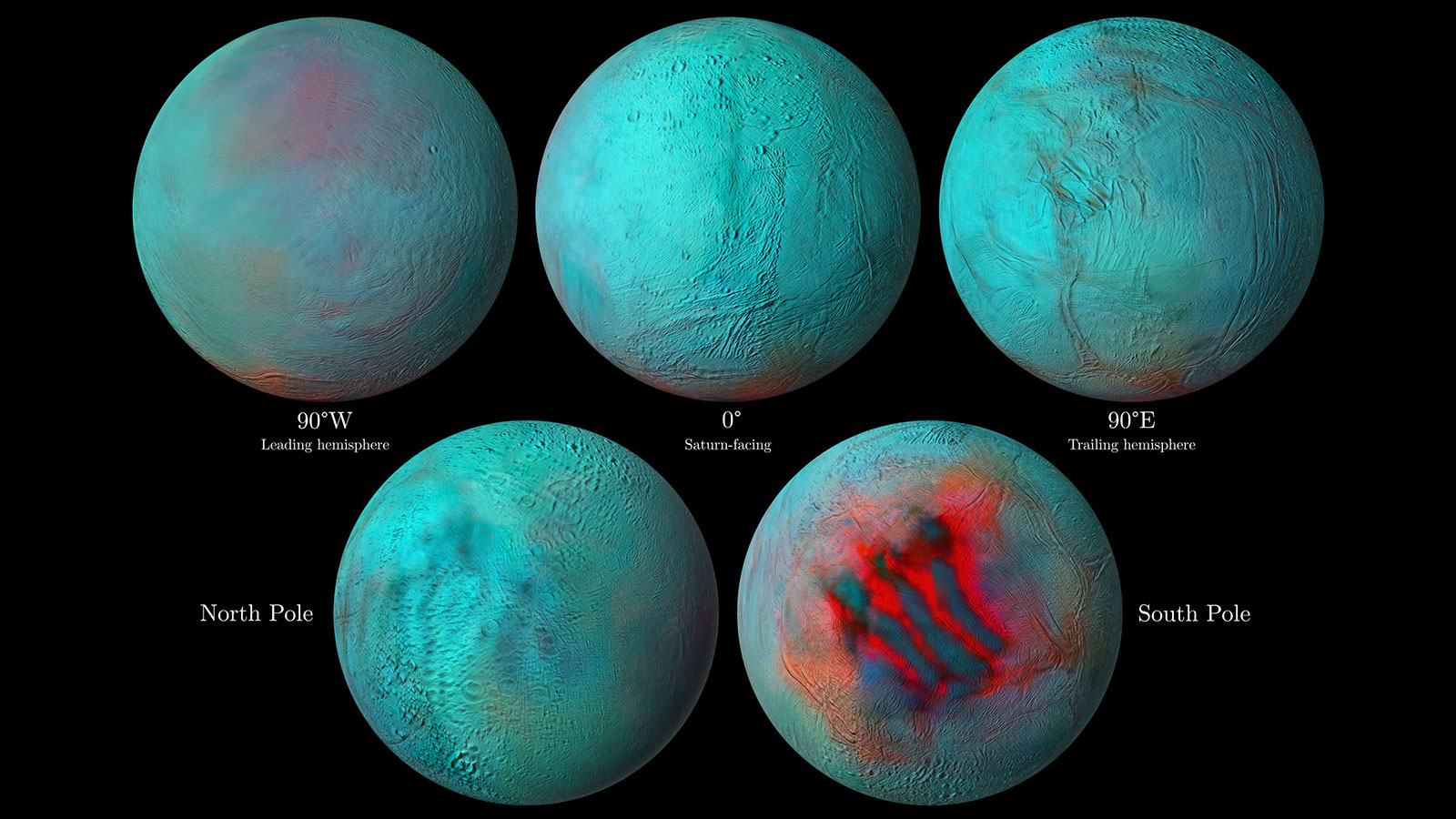Fresh frozen items delivered to Enceladus’s north pole too
No, unfortunately nobody’s opened a new Ben and Jerry’s on Saturn’s icy moon Enceladus. Not yet, at least. But a new paper just published in the magazine, Icarus, shows again just how valuable the images are from the joint NASA-ESA mission Cassini, even years after the probe was intentionally crashed into Saturn. Specifically, Cassini also delivered the most detailed global infrared images ever taken of Saturn’s moon Enceladus. Combined with photos of Cassini’s other cameras, they provide convincing evidence that the northern hemisphere of the moon is covered with relatively fresh ice from its interior.
The scientists that were part of the Cassini mission discovered in 2005 that enormous geysers of ice particles and vapor are shooting out from an ocean beneath its icy crust. The new spectral map shows that infrared signals can be clearly correlated with this geological activity that can be easily seen at its south pole. There, ice and vapor from the liquid interior are being ejected out in the so-called “tiger stripes.”
Some of the same infrared features occur, however, also in its northern hemisphere. This tells scientists that not only are the northern regions also being covered with fresh ice, but also that the same kind of geological activity has taken place in both hemispheres. The rebuilding of the northern landscape could be traced back to either geysers or a more gradual movement of the ice through cracks in the crust from the subsurface ocean to the surface.
“The infrared shows us that the surface of the south pole is young, which is not surprising, because we knew about the jets that bring icy material to the surface there,” says Gabriel Tobie, scientist at the University of Nantes in France and co-author of the new study. “Thanks to these infrared eyes, we can go back in time and say that a large region in the northern hemisphere also appears to be young and was probably active not that long ago, in geological terms.”
